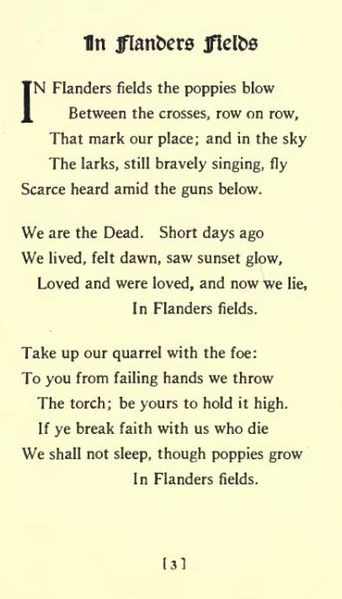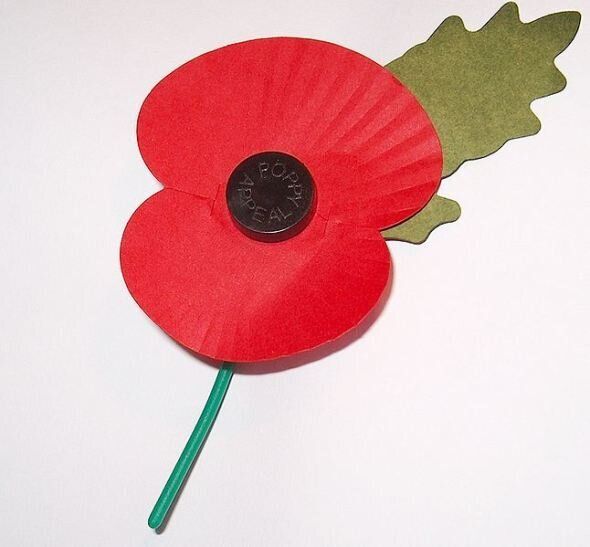
The history bit:
The use of the poppy was inspired by the World War I poem 'In Flanders Fields'. It refers to the many poppies that were the first flowers to grow in the churned-up earth of soldiers' graves in Flanders, a region of Europe that overlies parts of Belgium, France, and the Netherlands. Canadian physician and Lt Col. John McCrae is understood to have written it on 3 May 1915 after witnessing the death of his friend (a fellow soldier) the day before.

Inspired by the poem, American teacher Moina Bell Michael went on to sell silk poppies to friends to raise money for the ex-service community. By 1920 the poppy was proclaimed the national emblem of remembrance in the US, and in the UK. Ever since it has been adopted by an ever increasing community, and last year it is said Britons bought over 26m. A Royal British Legion team of about 50 people--most of them disabled former British military personnel--work all year round to make millions of poppies at a factory in Richmond, England.
Quick fact:
In England, Wales, and Northern Ireland, the poppies have two red petals, a green paper leaf and are mounted on a green plastic stem. In Scotland the poppies are curled and have four petals with no leaf.

Where to wear them:
The poppy is a 'must' at this time of year and people are all too ready to pass comment on how to wear them. Some people say left, as it's worn over the heart. Others say only the Queen and Royal Family are allowed to wear a poppy on the right, which surely can't be true. Then there is the school of thought that says men should wear theirs on the left and women on the right, as is the traditional custom with a badge or brooch. There are even opinions on the correct position of the green leaf. That it should be pointing at 11 o'clock so as to recognise the importance of the eleventh hour. The Royal British Legion spokesman says there is no right or wrong side "other than to wear it with pride". That's good enough for me.
James writes the style blog: Collar to Cuff
Follow James Field on Facebook: James Field